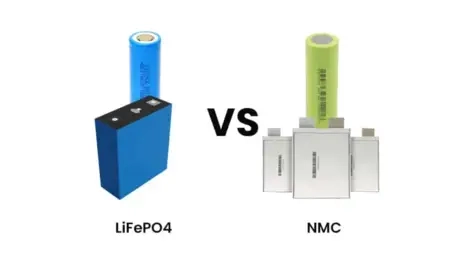The realm of batteries is vast and diverse, with options like the 14500 and AA batteries catching the attention of users. In this article, we delve into the intricacies of the 14500 vs AA battery debate, exploring their dimensions, voltages, capacities, and most importantly, whether you can seamlessly swap one for the other.
What are 14500 Batteries?
At its core, a 14500 battery is a rechargeable lithium-ion powerhouse with specific dimensions: 14mm in diameter and 50mm in length. These batteries, akin to standard AAs, share a resemblance but exhibit vital differences.
Comparing Voltages and Capacities:
The defining factor between the 14500 and AA batteries lies in their voltages. A fully charged 14500 boasts 3.7V, surpassing the 1.5V of a standard alkaline AA battery. This higher voltage renders them incompatible in devices designed for AAs, potentially causing damage. Additionally, 14500 batteries often have lower capacities (mAh) than their AA counterparts, impacting the runtime of devices.
Chemical Distinctions:
The chemistry behind these batteries further differentiates them. 14500 batteries employ lithium-ion chemistry, while AA alkaline batteries use an alkaline chemistry. This dissimilarity extends to other AA-sized batteries like NiMH, introducing diverse chemical compositions.
Can I Use a 14500 Battery Instead of an AA Battery?
The question of substituting a 14500 for an AA arises, but it\'s not a straightforward swap. Compatibility hinges on the device\'s specifications; blindly replacing AAs with 14500s could lead to device damage. Therefore, prior verification of compatibility is crucial for safety and optimal performance.
What are AA Batteries?
AA batteries, a staple in the battery world, feature a cylindrical design with a diameter of about 14.5mm and a height of about 50.5mm (1.99 inches).
Voltage and Chemistry:
- Alkaline AA: The most common type, with a voltage of 1.5V.
- NiMH (Nickel-Metal Hydride) AA: Rechargeable and usually has a voltage of 1.2V, with various capacities ranging from 600mAh to 2800mAh.
- NiCd (Nickel-Cadmium) AA: Older rechargeable batteries with a voltage of 1.2V, less common due to memory effect and environmental concerns.
- Lithium AA: Not to be confused with lithium-ion, these batteries offer a 1.5V output, similar to alkaline batteries but with a longer lifespan. Especially useful in cold climates and high-drain devices.
Usage and Battery Life:
AA batteries find applications in a wide variety of devices, including remote controls, flashlights, toys, digital cameras, and various household items. The lifespan of an AA battery depends on its chemistry, capacity (measured in milliamp-hours or mAh), the device in which it’s used, and the current draw of the device.
Environmental Concerns:
As with all batteries, there are environmental concerns associated with their production, usage, and disposal. Proper disposal or recycling is crucial.
When purchasing AA batteries, it’s essential to consider the device’s requirements, with alkaline batteries suitable for intermittent use and rechargeable NiMH batteries offering better value for high-drain and frequently used devices.
Comparing 14500 and AA Battery:
14500 and AA batteries share the cylindrical, single-use design but differ significantly in size, capacity, and voltage output.
Size:
Both have a similar cylindrical shape, but 14500s are about 45mm long, slightly shorter than the 50mm AA batteries.
Capacity:
14500 batteries range between 600-1000mAh, while AAs offer a capacity of 2000-3000mAh.
Voltage:
A Li-ion 14500 outputs up to 3.7V, making it suitable for high-powered devices, whereas AAs provide around 1.5V.
Availability & Use:
While AAs are more widespread and cost-effective for general purposes, 14500s, despite their special charger requirements and less commonality, excel in performance for certain tasks. Both types of batteries can be found in alkaline or rechargeable options depending on your needs.
If you’re looking for portability and convenience over power output, then AA may be your choice due to its wider availability compared to the less popular Li-ion-powered 14500 that comes with better performance characteristics but requires special chargers as well as being relatively expensive than AAs.
Can I Use a 14500 Battery Instead of an AA Battery?
No. Due to the voltage disparity between AA and 14500 batteries, it’s generally not advisable to interchange them. However, certain devices, like AA flashlights, are designed to accommodate both AA and 14500 batteries. For sporadically used devices, high-quality, low self-discharge AA batteries are preferable, while regularly used devices benefit from 14500 batteries.
Can I Charge a 14500 Battery in AA Battery Charger?
Of course No! Charging a 14500 battery in a standard AA battery charger is not recommended. The 14500 Li-Ion battery has different voltage, chemistry, and specifications compared to the AA battery. Charging a 14500 battery in an AA charger that isn’t explicitly compatible can lead to reduced battery life, potential damage, and safety hazards such as overheating or venting. It’s crucial to use a charger specifically designed for lithium-ion cells or one that states it’s compatible with both NiMH AA and 14500 lithium-ion batteries to ensure safety and proper charging.
Who Makes the Best 14500 and AA Battery?
The Redway engineer team has succeeded in developing new 14500 and AA lithium batteries. If you want to explore customized 14500 and AA lithium batteries, please contact us for the scheme and quotation.
Conclusion:
14500 and AA batteries, although similar in appearance, differ significantly in voltage and capacity. Using a 14500 battery as a substitute for an AA might damage devices or cause injury unless you’re sure of compatibility. Always consult manufacturer guidelines or experts before making a switch. Separately, Redway offers reliable Lithium Iron Phosphate Battery solutions, suitable for various applications from RVs to emergency lighting. They specialize in custom solutions, serving wholesale and B2B customers, and are recognized for quality and reliability in Europe.In the dynamic landscape of batteries, the competition between LiFePO4 (Lithium Iron Phosphate) and NMC (Nickel Manganese Cobalt) batteries takes center stage. This section explores the nuances of these two battery technologies, shedding light on their chemistry, performance, and suitability for various applications.
the LiFePO4 vs NMC battery duel, unraveling their strengths, weaknesses, and the key factors to consider when choosing between them.



